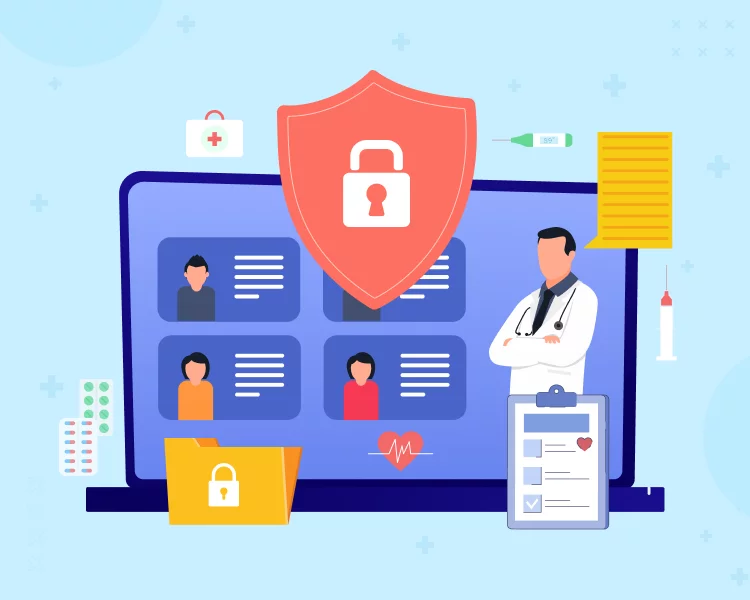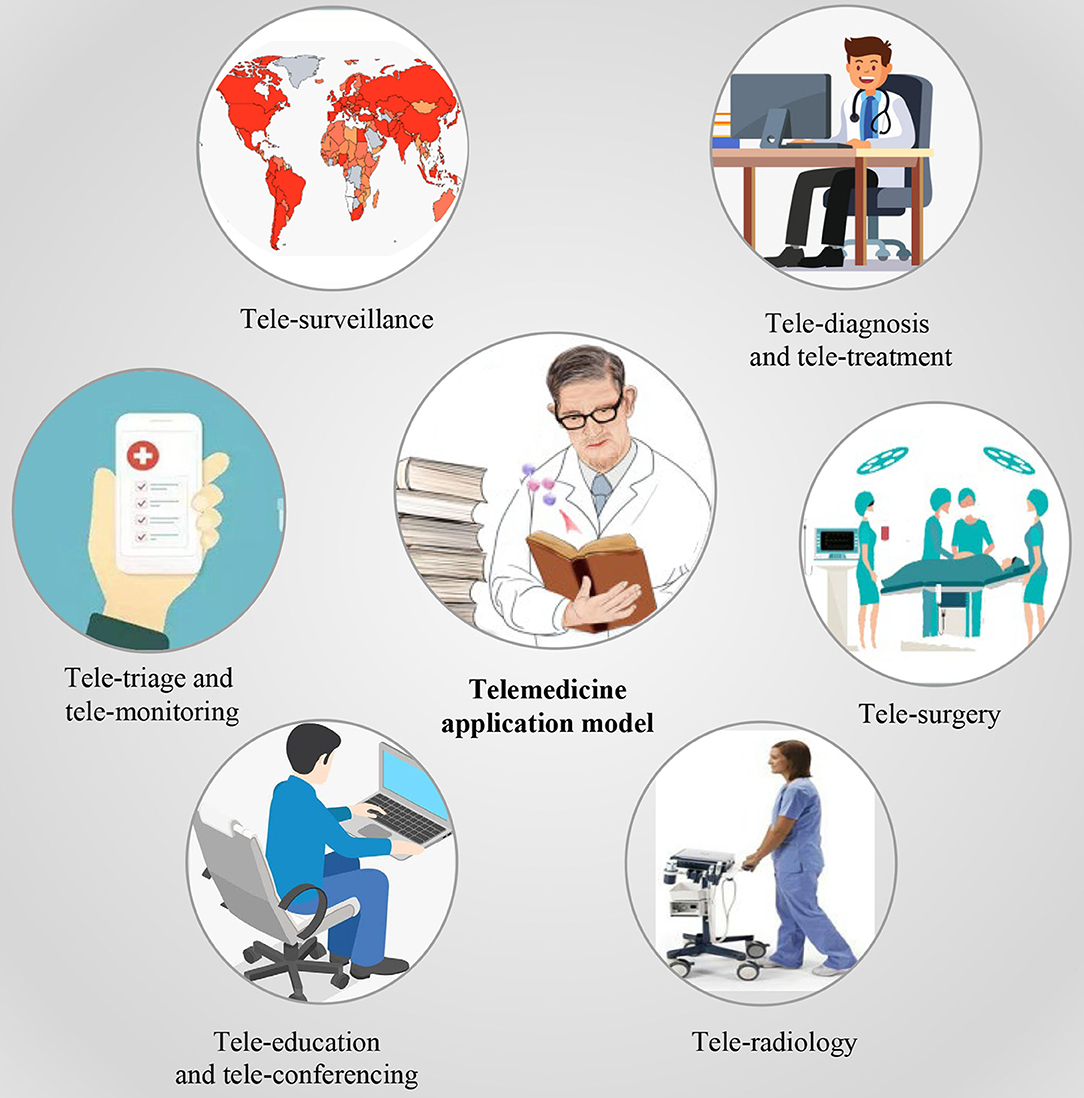- Introduction
- Benefits of Telemedicine Development
- Challenges in Telemedicine Implementation
- Steps to Implement Telemedicine Services
- Legal Considerations in Telemedicine
- Enhancing Patient Experience with Telemedicine
- Conclusion
- Frequently Asked Questions (FAQs)
Table of Contents
Is Telemedicine Development Right for Your Practice?

Introduction
Ever since the 21st-century pandemic hit our lives in 2020, so many things have changed. From the means of attending school or college to working in the office, we choose convenience by opting to work from home or online classes.
And that convenience was not only limited to workplaces or classes but to everything imaginable, want to shop? Online shopping platforms are here, want freshly cooked meals? Order it and will be delivered within an hour.
So the most important healthcare industry was also not behind, remember the COVID protocols? Yes, so many app development services and healthcare facilities took advantage of those rules and brought telemedicine apps to our mobile phones.
Using those, consulting with doctors, ordering medicines, checking our vitals, sharing medical records, and accessing superfast care became much easier. This ease of use feature made the telemedicine apps a popular choice among patients and caregivers.
So if you have not decided yet about whether you should introduce the wonders of telemedicine apps in your traditional healthcare practice, and want to learn every ins and outs about whether will it be the right choice for your practice or not then be with us as we will walk you through every step that will make your telemedicine development decision easier.
Benefits of Telemedicine Development
Let us learn about the benefits that make telemedicine an attractive option for improving access to care, enhancing efficiency, and reducing healthcare costs for both patients and providers.
Improved access to care for patients:
Telemedicine eliminates geographical barriers and allows patients to connect with healthcare providers remotely. This feature is a boon for individuals residing in rural or underserved areas having limited access to healthcare facilities.

Not only patients from underserved areas, but patients with mobility issues, chronic illnesses, or limited transportation options can also be benefitted. Telemedicine allows them to receive medical advice, prescriptions, and follow-up care without the need for long-distance travel.
Increased efficiency and flexibility for healthcare providers:
Virtual consultation features in telemedicine apps reduce waiting times and eliminate the need for physical waiting rooms, which is favorable during busy periods.
Healthcare providers can often manage a larger volume of patients by eliminating travel time and optimizing scheduling. Additionally, telemedicine allows for greater flexibility in terms of work hours, as providers can conduct consultations from remote locations.
Reduction of healthcare costs:
Telemedicine has the potential to reduce healthcare costs for both patients and healthcare providers. For patients, telemedicine eliminates costs related to transportation and time for in-person appointments. With its monitoring feature, It can also lead to early interventions and preventative care, reducing the need for costly emergency department visits or hospitalizations.
On the other hand, healthcare providers can benefit from cost savings related to overhead expenses, such as office space and staff requirements. Telemedicine apps are a great way to avoid unnecessary testing and hospital readmissions, contributing to overall cost reduction in the healthcare system.
Challenges in Telemedicine Implementation
Well, there are a few challenges that telemedicine apps face, and addressing these challenges before implementation is crucial to ensure the successful integration of telemedicine services into healthcare practices.

Technological limitations and infrastructure requirements:
Implementing telemedicine applications will require reliable and secure technological infrastructure, such as high-speed internet connectivity, video conferencing capabilities, and electronic health record systems. In certain areas where there is limited internet access or outdated technology, these advanced requirements can pose challenges.
Before proceeding further, you may need to check the compatibility of your existing system with telemedicine platforms and invest in upgrading your technology infrastructure if needed.
Additionally, to operate freely, both you and your patients need to have access to the necessary devices and knowledge to effectively use telemedicine technology.
Ensuring patient data security and privacy:

Telemedicine involves tra, which Medicine apps often raise concerns regarding data security and privacy as it requires transmitting and storing sensitive patient information electronically.
Make sure that appropriate measures are in place to protect patient data from unauthorized access, hacking, or breaches. This includes robust encryption protocols, secure storage systems, and compliance with data protection regulations, such as HIPAA in the United States.
Hire a telemedicine development consultancy that is knowledgeable about the security features of telemedicine platforms and can take care of the patient’s data and privacy while delivering the app meeting your requirements.
Addressing regulatory and legal considerations:
Telemedicine apps are subject to various regulatory and legal considerations that can vary depending on the jurisdiction. Make sure your licensing requirements for telemedicine providers are in compliance with laws and regulations specific to telemedicine services.
This may include restrictions on prescribing medication without an in-person examination, reimbursement policies, and compliance with telehealth-specific regulations. It is essential for healthcare practitioners to thoroughly understand the legal landscape and work with legal experts to ensure compliance with telemedicine regulations.
Steps to Implement Telemedicine Services
Before launching your telemedicine app, there are certain steps that you should implement for a smooth and uninterrupted deployment.
Assessing your practice's readiness for telemedicine:
Start by evaluating your practice's current infrastructure and capabilities to check if it is ready to support telemedicine services. Consider factors such as the availability of reliable internet connectivity, electronic health record systems, and staff comfort with technology.
Assess the potential demand for telemedicine services among your patient population and identify any specific areas of need that telemedicine can address.
Identifying suitable telemedicine platforms and technologies:

There are various application platforms and technologies available in the market to develop and deploy your telemedicine app. Evaluate different options by considering features like video conferencing, appointment scheduling, patient data management, and billing capabilities.
It is also important to ensure that the chosen platform complies with relevant regulations and data protection laws.
Training staff and ensuring a smooth workflow integration:

Training and supporting your staff will ensure that they are knowledgeable and comfortable with telemedicine technology and workflows in their daily work. This may include training sessions on how to conduct virtual consultations, use the telemedicine platform, document patient information, and address technical issues.
Also implement standardized protocols and guidelines for telemedicine appointments, including procedures for scheduling, patient consent, and payment. Integrate telemedicine services into your existing workflow to ensure a smooth transition seamless delivery of care and a better understanding for your patients.
Legal Considerations in Telemedicine
To navigate these legal considerations effectively, consult with legal experts who specialize in healthcare and telemedicine regulations. They can provide guidance on compliance, help draft necessary policies and consent forms, and keep you updated on any changes in the legal landscape that may impact your telemedicine practice.
Overview of telemedicine laws and regulations:
It is important to have a comprehensive understanding of the legal framework surrounding telemedicine, including guidelines on practice standards, patient consent, prescribing medications, and the use of telehealth technologies. Familiarize yourself with laws such as the Health Insurance Portability and Accountability Act (HIPAA) in the United States, which protects patient privacy and security in telemedicine.
Understanding reimbursement and licensing requirements:
It is crucial to understand the reimbursement policies of different insurance providers, Medicare, and Medicaid to ensure proper billing and reimbursement for telemedicine consultations. Additionally, licensing requirements for telemedicine providers may differ from traditional in-person practice. Research and comply with the licensing requirements in the areas you intend to offer telemedicine services.
Liability and malpractice considerations:
As a healthcare provider, you must ensure that you adhere to the same standard of care during telemedicine consultations as you would during in-person visits. Depending on your jurisdiction, you may need to maintain adequate malpractice insurance coverage that includes telemedicine services.
Enhancing Patient Experience with Telemedicine
By focusing on improving convenience, ensuring effective communication, and addressing patient concerns, you can providers can enhance the patient experience with telemedicine.
Improving convenience and accessibility:
Telemedicine already offers patients the convenience of accessing healthcare services from the comfort of their homes or any other convenient location. To enhance convenience further, offer flexible scheduling options for telemedicine appointments, including evening or weekend availability.
By providing accessibility and simplifying the registration and onboarding process for new telemedicine patients you will be able to streamline their experience.
Ensuring effective communication with patients:

Not every one of your targetted audience will be tech-savvy, and here the role of Clear and effective communication will become crucial.
Offer clear instructions on how to access the telemedicine platform and provide any necessary technical support for patients who may have difficulties.
During the telemedicine visit, maintain an empathetic and engaged approach, actively listening to patient’s concerns, and addressing their questions thoroughly. Implement secure messaging or email follow-ups to provide additional information and do not forget to answer any further questions after the telemedicine consultation.
Addressing potential barriers and concerns for patients:
Understand that some patients may have concerns or barriers to engaging with telemedicine. Common concerns include issues related to the privacy and security of their health information and difficulties in understanding and using the technology.
Address these concerns by clearly communicating the measures in place to ensure privacy and data security. Provide patient education materials and support to help patients become comfortable with using the telemedicine platform.
Keep the option of alternatives for patients who may face technological barriers, such as providing telephone consultations or assistance from a family member or caregiver.
Conclusion
once you have decided to implement telemedicine in your traditional healthcare practices it will offer you numerous benefits and open a door to the success of your services.
From convenience, access to care, and improved patient experience to provide your medical practice an edge in this market, telemedicine apps will prove to be a convenience for both you and your patients.
By carefully considering the above factors and following the necessary legal and regulatory factors you can make an informed decision that will meet your goals of improving patient care and accessibility to healthcare services to a wide audience.
Keep in mind all the points discussed above and telemedicine development will turn out to be the right choice to include in your healthcare practice.
Suggested Reading : How Telemedicine Apps can Improve Patient Care?
Frequently Asked Questions (FAQs)
Is telemedicine development suitable for my practice?
Telemedicine development can be beneficial for a wide range of healthcare practices. It offers the opportunity to expand access to care, increase patient convenience, and potentially improve practice efficiency.
However, whether telemedicine development is right for your practice depends on various factors such as the nature of your specialty, patient population, existing infrastructure and resources, and regulatory and legal considerations.
How can I determine if telemedicine is a good fit for my practice?
To determine if telemedicine is a good fit for your practice, you should assess your patient demographic and their access to technology and internet services. Additionally, consider the types of services you offer and whether they can be effectively delivered remotely.
Assess your practice's resources and readiness to adopt telemedicine, including technological infrastructure, staff training, and support systems.
Are there any legal and regulatory considerations I should be aware of?
Yes, there are legal and regulatory considerations that vary by jurisdiction. Familiarize yourself with the laws and regulations related to telemedicine in your area, including licensure requirements, reimbursement policies, prescribing regulations, and patient consent and privacy guidelines.
Adhering to these regulations is crucial to ensure compliance and avoid potential legal issues.
Table of Contents
- Introduction
- Benefits of Telemedicine Development
- Challenges in Telemedicine Implementation
- Steps to Implement Telemedicine Services
- Legal Considerations in Telemedicine
- Enhancing Patient Experience with Telemedicine
- Conclusion
- Frequently Asked Questions (FAQs)


